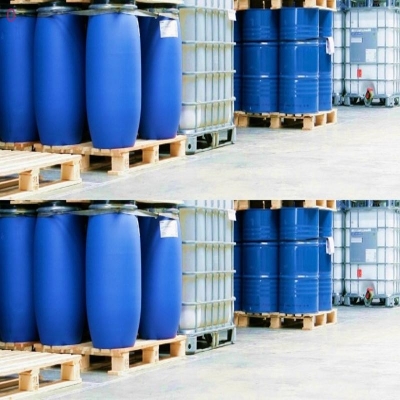-
Categories
-
Pharmaceutical Intermediates
-
Active Pharmaceutical Ingredients
-
Food Additives
- Industrial Coatings
- Agrochemicals
- Dyes and Pigments
- Surfactant
- Flavors and Fragrances
- Chemical Reagents
- Catalyst and Auxiliary
- Natural Products
- Inorganic Chemistry
-
Organic Chemistry
-
Biochemical Engineering
- Analytical Chemistry
- Cosmetic Ingredient
-
Pharmaceutical Intermediates
Promotion
ECHEMI Mall
Wholesale
Weekly Price
Exhibition
News
-
Trade Service
【Hot attention of Chemical Machinery Equipment Network ] Recently, Sun Dongming and Cheng Huiming research group of *Metal Research Institute cooperated with relevant units to develop a flexible carbon nanotube-quantum dot neuromorphic artificial vision photoelectricSensor .
Current artificial vision systems are often implemented by connecting traditional complementary metal oxide semiconductor or charge-coupled device image sensors with digital systems that execute machine vision algorithms.
Hot attention of Chemical Machinery Equipment NetworkChemical machinery and equipmentsensorCurrent artificial vision systems are often implemented by connecting traditional complementary metal oxide semiconductor or charge-coupled device image sensors with digital systems that execute machine vision algorithms.
To this end, researchers designed and prepared a 1024-pixel flexible neuromorphic photoelectric sensor array, in which cesium-lead bromide perovskite quantum dots are used as the photosensitive layer and photo-generated charge trapping layer, and the semiconducting carbon nanotube film is used as the charge transport layer.
At the same time, the photoelectric sensor array integrates functions such as light sensing, information storage and data preprocessing, which is similar to the behavior of biological systems and realizes real-time parallel processing of information, which has important enlightening significance for artificial vision systems that imitate biological vision processing.
At the same time, the photoelectric sensor array integrates functions such as light sensing, information storage and data preprocessing, which is similar to the behavior of biological systems and realizes real-time parallel processing of information, which has important enlightening significance for artificial vision systems that imitate biological vision processing.
So what kind of progress can the combination of artificial intelligence and sensors bring to human society?
Artificial intelligence technology optimizes the sensor system
Artificial intelligence technology optimizes the sensor system"Sensor", "Artificial Intelligence", and "Internet of Things", these seemingly unrelated words, are actually related to each other, forming a general trend.
In this chain, each link will respond to the next one.
The ring has an impact, and this creates a positive cycle.
The sensors in various connected devices will generate a large amount of data.
The massive amount of data makes machine learning possible.
The result of machine learning is AI, and AI instructs the robot to perform tasks more accurately, and the robot's actions trigger the sensor.
This whole is a complete cycle.
In this chain, each link will respond to the next one.
The ring has an impact, and this creates a positive cycle.
The sensors in various connected devices will generate a large amount of data.
The massive amount of data makes machine learning possible.
The result of machine learning is AI, and AI instructs the robot to perform tasks more accurately, and the robot's actions trigger the sensor.
This whole is a complete cycle.
Artificial intelligence technology can help sensor systems.
They are: knowledge-based systems, fuzzy logic, automatic knowledge collection, neural networks, genetic algorithms, case-based reasoning, and environmental intelligence.
These technologies are becoming more and more widely used in sensor systems, not only because they are indeed effective, but also because of the increasing popularity of computer applications today.
These artificial intelligence technologies have the highest computational complexity and can be applied to small sensor systems, single sensors, or systems using low-capacity micro-controller arrays.
The correct application of artificial intelligence technology will create more competitive sensor systems and applications.
They are: knowledge-based systems, fuzzy logic, automatic knowledge collection, neural networks, genetic algorithms, case-based reasoning, and environmental intelligence.
These technologies are becoming more and more widely used in sensor systems, not only because they are indeed effective, but also because of the increasing popularity of computer applications today.
These artificial intelligence technologies have the highest computational complexity and can be applied to small sensor systems, single sensors, or systems using low-capacity micro-controller arrays.
The correct application of artificial intelligence technology will create more competitive sensor systems and applications.
Other technological advances in the field of artificial intelligence will also have an impact on sensor systems, including data mining technology, multi-agent systems, and distributed self-organizing systems.
Environmental sensing technology can integrate many miniature electronic processors and sensors into everyday objects, making them intelligent.
They can create smart environments, communicate with other smart devices, and interact with humans.
The suggestions given can help users complete tasks more intuitively, but the consequences of this integrated technology will be difficult to predict.
Environmental sensing technology can integrate many miniature electronic processors and sensors into everyday objects, making them intelligent.
They can create smart environments, communicate with other smart devices, and interact with humans.
The suggestions given can help users complete tasks more intuitively, but the consequences of this integrated technology will be difficult to predict.
Synergy
SynergyArtificial intelligence is currently bringing innovation to all aspects of society.
For example, by combining the advantages of data mining and deep learning, artificial intelligence can now be used to analyze big star data from various sources, identify various patterns, provide interactive understanding and make intelligent predictions.
For example, by combining the advantages of data mining and deep learning, artificial intelligence can now be used to analyze big star data from various sources, identify various patterns, provide interactive understanding and make intelligent predictions.
In fact, most of the artificial intelligence actions and application scenarios need to rely on suitable sensors to achieve.
Sensors are the hardware foundation for the development of artificial intelligence technology and a prerequisite for artificial intelligence to establish a connection with everything.
Take autonomous driving as an example.
The core of autonomous driving is to allow cars to bypass human senses and interact with the traffic environment.
The extent of this depends on radar, vision cameras and a variety of sensor devices.
Sensors are the hardware foundation for the development of artificial intelligence technology and a prerequisite for artificial intelligence to establish a connection with everything.
Take autonomous driving as an example.
The core of autonomous driving is to allow cars to bypass human senses and interact with the traffic environment.
The extent of this depends on radar, vision cameras and a variety of sensor devices.
Obviously, the government has also seen the importance of sensors to the artificial intelligence industry.
In the past few years, * officially issued the "Three-year Action Plan to Promote the Development of the New Generation Artificial Intelligence Industry".
The focus of the plan is to cultivate eight smart products and four It is the core foundation, and the smart sensor ranks first in the core foundation, in the most fundamental and most important position.
This further affirms the importance of smart sensors for the development of artificial intelligence industry.
In the past few years, * officially issued the "Three-year Action Plan to Promote the Development of the New Generation Artificial Intelligence Industry".
The focus of the plan is to cultivate eight smart products and four It is the core foundation, and the smart sensor ranks first in the core foundation, in the most fundamental and most important position.
This further affirms the importance of smart sensors for the development of artificial intelligence industry.
Sensors will be the core foundation of the Internet of Everything in the future.
At present, the development of information technology is in a historical period of cross-border integration, accelerated innovation, and in-depth adjustment, presenting the new characteristics of interconnection of all things and intelligence of all things.
The rise of cloud computing, big data, and artificial intelligence has promoted a major turning point in computing architecture, models, and smart sensing, and market applications have shown explosive growth.
At present, the development of information technology is in a historical period of cross-border integration, accelerated innovation, and in-depth adjustment, presenting the new characteristics of interconnection of all things and intelligence of all things.
The rise of cloud computing, big data, and artificial intelligence has promoted a major turning point in computing architecture, models, and smart sensing, and market applications have shown explosive growth.
to sum up
to sum up With the advent of the new technological revolution, the world has begun to enter the information age.
To obtain a large amount of information that cannot be directly obtained by the human senses, it is impossible without a suitable sensor.
The Internet of Things makes artificial intelligence a reality.
The Internet of Things provides off-the-shelf sensors and provides more meaningful ways to perceive the material world, thereby allowing artificial intelligence to "live".
Sensors give artificial intelligence "eyes" to see the world, give them a "good ear", and give artificial intelligence "a sharp sense of touch".
In many ways, sensors are giving artificial intelligence superpowers.
To obtain a large amount of information that cannot be directly obtained by the human senses, it is impossible without a suitable sensor.
The Internet of Things makes artificial intelligence a reality.
The Internet of Things provides off-the-shelf sensors and provides more meaningful ways to perceive the material world, thereby allowing artificial intelligence to "live".
Sensors give artificial intelligence "eyes" to see the world, give them a "good ear", and give artificial intelligence "a sharp sense of touch".
In many ways, sensors are giving artificial intelligence superpowers.
Original title: Sensors give artificial intelligence superpowers to create an interactive future







